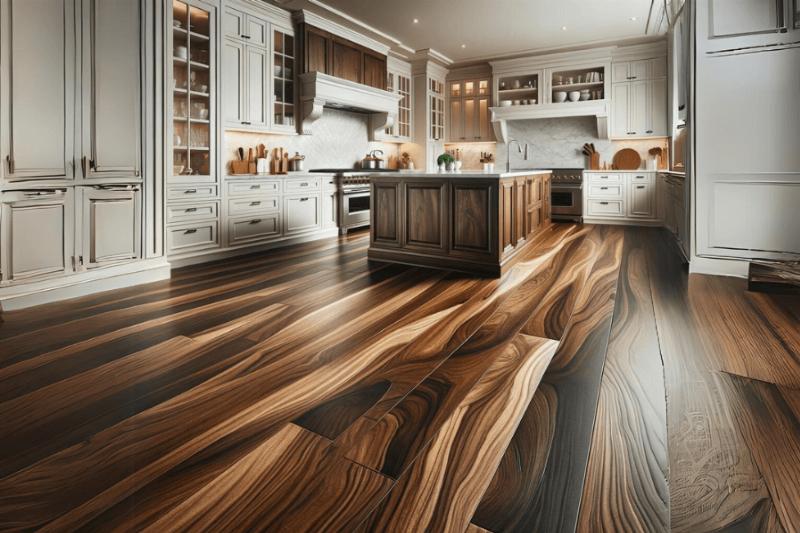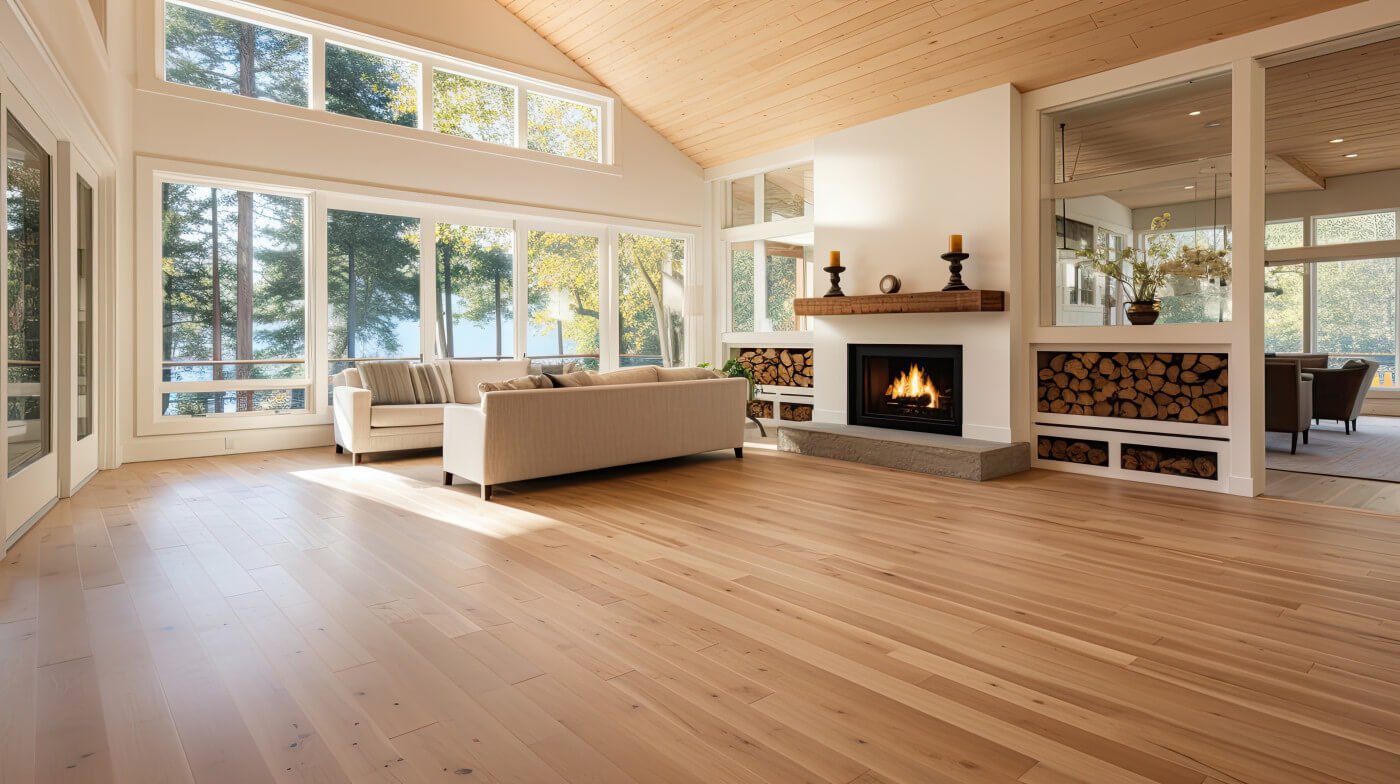Specialist Tips for Picking the Perfect Flooring Material
Picking the suitable flooring product for your space involves a mindful assessment of various elements, including space requirements, toughness, and visual preferences. By comprehending these elements, one can navigate the intricacies of flooring alternatives a lot more efficiently.
Evaluate Your Room Demands
When picking floor covering product, it is necessary to completely analyze your room needs to guarantee a practical and cosmetically pleasing outcome. Begin by assessing the function of the room. Various areas, such as living rooms, cooking areas, or high-traffic hallways, need varying degrees of floor covering resilience and convenience.
Next, consider the dimensions of the location. Smaller spaces could take advantage of lighter colors or patterns that can produce an illusion of higher expansiveness, while bigger rooms can suit bolder styles or darker tones. In addition, take into consideration the area design and any architectural features that may affect floor covering choice, such as open layout or adjacent rooms.
Lights also plays a vital function in your option process. Natural light can change the perception of color and structure, making it essential to check samples in the real lighting problems before making a decision. Lastly, aspect in the existing furnishings and decor, ensuring that the picked floor covering integrates with these components for a cohesive appearance. By diligently analyzing these requirements, you can choose floor covering that not just satisfies sensible requirements but also boosts the total aesthetic of your room.
Review Resilience and Upkeep
Longevity and maintenance are essential aspects to consider when picking floor covering products, as they straight affect the durability and upkeep of your investment. Various flooring alternatives display differing levels of strength and care demands, making it important to evaluate these components based upon your specific lifestyle and use patterns.
For high-traffic areas, materials like ceramic tile and high-end plastic slab offer premium toughness, standing up to scrapes and wear effectively. Hardwood flooring, while visually enticing, may need more persistent maintenance to stay clear of dents and scratches. On the other hand, laminate floor covering incorporates affordability with good sturdiness, making it a functional choice for several homes.
Upkeep factors to consider also play a crucial duty in your choice. Some products, such as rug, may require normal deep cleansing and discolor elimination, while others like polished concrete call for minimal maintenance. The convenience of upkeep can dramatically affect your long-lasting fulfillment with the floor covering option.
Eventually, examining the sturdiness and maintenance demands will guarantee that you select a floor covering product that not just matches your space yet likewise holds up against the examination of time, supplying both functionality and value.
Think About Aesthetic Preferences
Aesthetic choices play a critical duty in the floor covering choice process, as the visual allure of your space significantly influences its overall atmosphere and design. When choosing flooring, take into consideration how various materials, shades, and patterns line up with your style vision. Wood can give warmth and refinement, while sleek floor tiles may stimulate a contemporary, minimal feel.
Additionally, the surface of the floor covering product can substantially modify its look. Glossy surfaces mirror light and can create an impression of area, while matte coatings offer a more subdued, natural ambiance. Color option is equally important; lighter tones can make a room feel larger and extra welcoming, while darker tones can include deepness and dramatization.

Establish a Realistic Spending Plan
Choosing the ideal flooring material involves not only visual and tactile considerations however likewise financial planning. Developing a realistic spending plan is vital in making certain that you select a floor covering option that meets your aesthetic choices while staying economically feasible. Begin by assessing your total remodelling or construction spending plan, and allot a specific section for floor covering.
Consider both the price of materials and the setup expenditures - Flooring Store Houston TX. Floor covering rates can vary substantially based upon the type-- hardwood, carpet, laminate, or floor tile-- each with its very own cost range. It is necessary to account for possible added costs, such as underlayment, adhesives, or ending up products, which can affect the general expense
In addition, it is important home to include a contingency allowance, usually around 10-15% of the flooring budget, to suit unanticipated prices that might emerge during installation. Study various vendors and producers to contrast rates and high quality, guaranteeing you receive the very best value for your investment. By establishing a realistic spending plan, you can with confidence navigate the floor covering choice procedure, minimizing economic stress while achieving the wanted look and capability for your room.
Explore Environmental Influence
When taking into consideration floor covering options, the ecological influence of materials need to be a considerable consider the decision-making process. Sustainable floor covering materials not only decrease ecological impacts but likewise promote healthier indoor atmospheres.
Natural products, such as bamboo and cork, are outstanding options as they are eco-friendly and naturally degradable. Bamboo, as an example, expands rapidly and can be harvested without triggering deforestation. Cork, originated from the bark of cork oak trees, regenerates without hurting the tree, making it a lasting alternative.
On the various other hand, artificial materials frequently have a greater environmental expense because of the disposal, manufacturing, and removal processes entailed. Plastic and laminate, while cost-effective, can launch unsafe chemicals and add to landfill waste.
Moreover, consider the lifecycle of floor covering materials, including production, transport, and end-of-life disposal. Going with locally-sourced materials can reduce transport emissions, while items with qualifications such as Forest Stewardship Council (FSC) make certain liable sourcing.
Inevitably, selecting floor covering that aligns with environmental sustainability can enhance not only the aesthetic allure of an area but likewise its overall effect on the world.
Conclusion

Selecting the perfect floor covering material for your space entails a cautious examination of countless variables, including room requirements, toughness, and visual preferences.When choosing floor covering visit this site material, it is crucial to thoroughly analyze your area needs to ensure a useful and aesthetically pleasing result. When choosing floor covering, think about exactly how various products, colors, and patterns align with your style vision.Selecting the best floor covering material involves not only aesthetic and tactile factors to consider yet likewise financial planning (Vinyl Flooring Houston TX).In verdict, picking the perfect flooring product demands a comprehensive examination of area needs, longevity, visual preferences, budget plan constraints, and ecological impact